How much food can you grow in a small urban garden?
Could you double or treble the amount of food you grow in your small urban garden?
I visited a garden recently which packs layers of fruit, vegetables and herbs into every corner of a small plot. It has been created by Karen Sutherland of Edible Eden Design.
She also keeps chickens, quail and bees.
Although the garden is in Melbourne (Australia), which is hotter in summer than, say, London, Boston or Glasgow, her principles will adapt to a small urban garden in any climate.
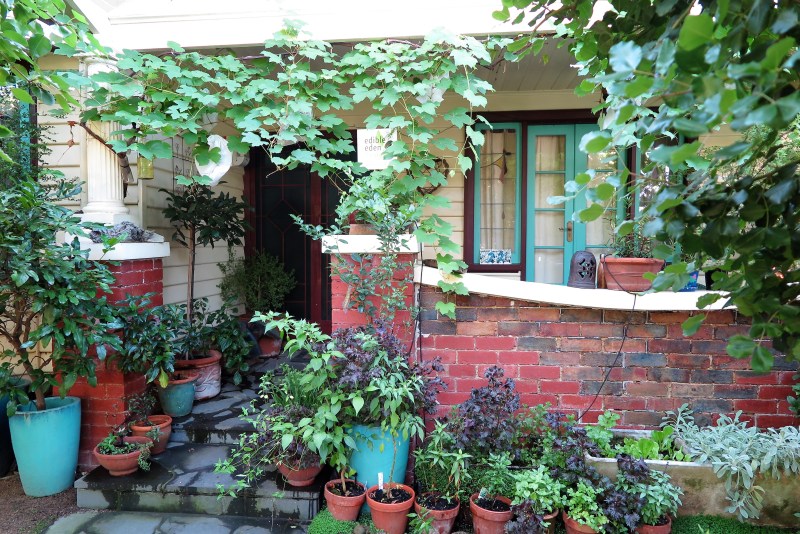
‘Gunyah’ in Melbourne, home to an incredibly productive grow-your-own garden and Edible Eden Design.
The garden is called Gunyah, and I visited it as part of the Open Gardens Victoria scheme.
But the principles of planting masses of edibles in a small space would apply wherever you live.
Use vertical spaces
Karen describes Gunyah as a ‘food forest’. ‘It has 200 or more edible and ‘useful’ plants closely layered to allow as many different species as possible.’
She is particularly interested in native and heritage plants. For example, she grows three kinds of native mint, as well as native jasmine.
The ‘top layer’ of the garden has fruit trees, such as an apricot ‘Trevatt’ which yielded a quarter of a ton of fruit over its lifetime.
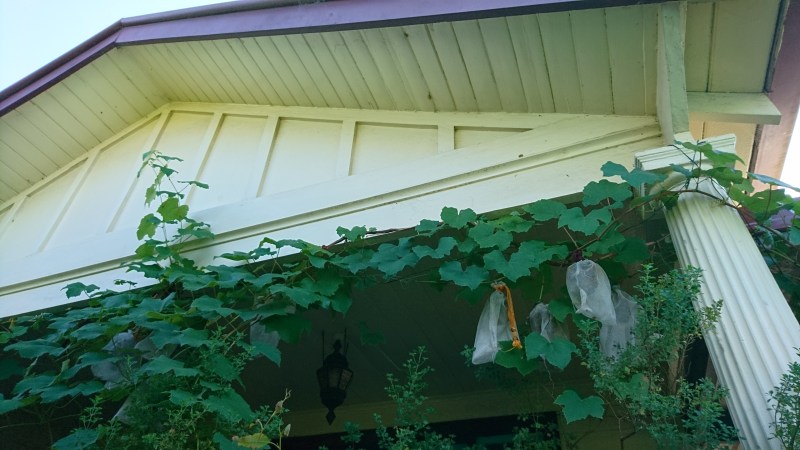
Vines grow up the side of the house, and up pillars or pergolas.
Vines, such as grape vines, kiwi and Choko, also run up the side of the house, using the vertical space. When I visited during the Open Gardens day, she had ‘tasting notes’ for six different varieties of grape.
She uses the leaves and tendrils of the Choko vine in stir-fries and makes jam with the fruits.
Each zone in the garden is different
There are four distinct areas to the garden. These are the front garden, the back garden, the roof of the car port and the verge in front of the house.
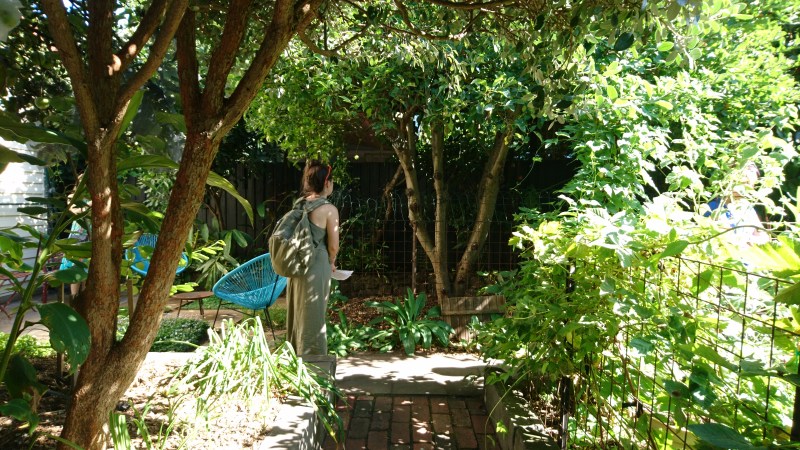
The back garden at Gunyah. The middle of the garden is a big bed of perennial edibles, such as sorrel, asparagus and rhubarb. There are fruit trees near the house and at the side. And there are chicken and quail runs along two sides of the garden.
Karen used the centre of the back garden to create a large ‘perennial edibles’ bed. The centre of a small garden is likely to be the sunniest.
It’s surrounded by a brick path. The coop for quail and the chicken enclosure run along the sides of the fence, where there is more shade.
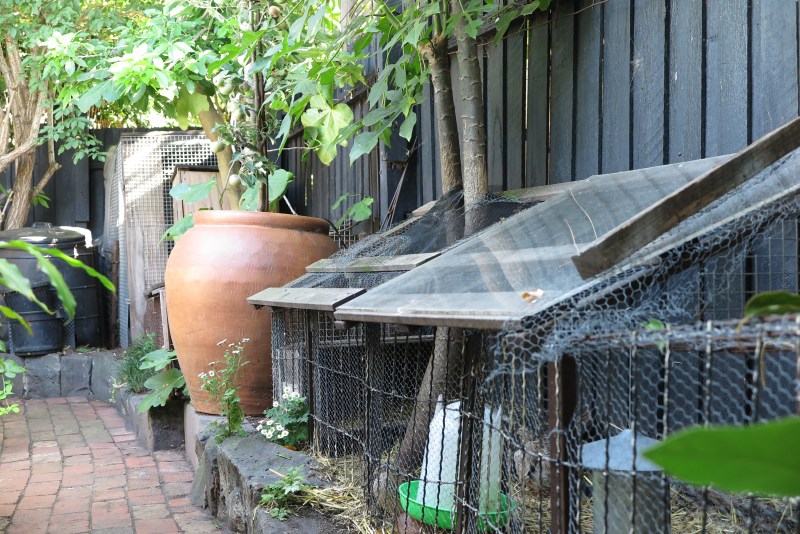
The quail lay four eggs every day. Some trees do well in pots.
Use the front garden for growing food

Karen grows olive and citrus trees in the sunny front garden. In a more temperate climate, you could grow an apple or pear tree even in the smallest front garden.
There are also herbs and pots in the front garden, as well as a sign explaining that the garden uses ‘grey water.’ This is water from the house, which has already been used for washing.
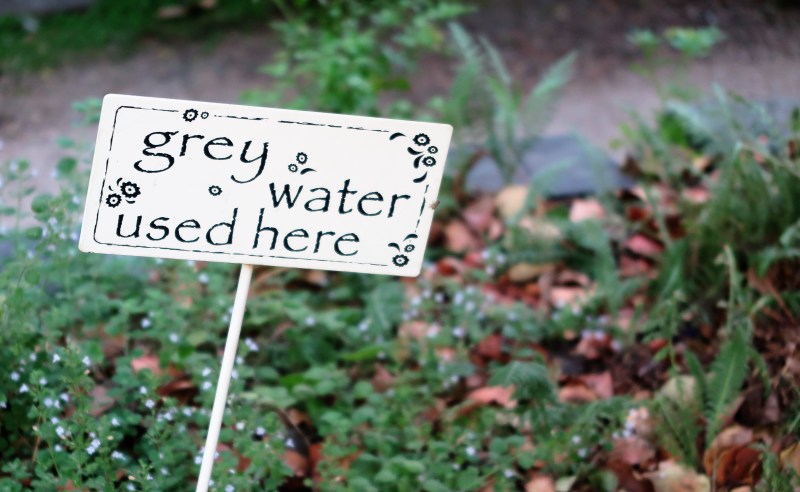
Most of the garden is watered with grey water – ie re-used from the house. In order to counter any negative effects, Karen also spreads pelletised manures and gypsum once a year.
‘Verge gardening’ can add to your small urban garden
‘Verge gardening’, sometimes referred to as a ‘nature strip,’ is a growing trend in towns where there is a strip of green between the pavement and the road. It usually belongs to the local council, so you need permission to ‘verge garden.’
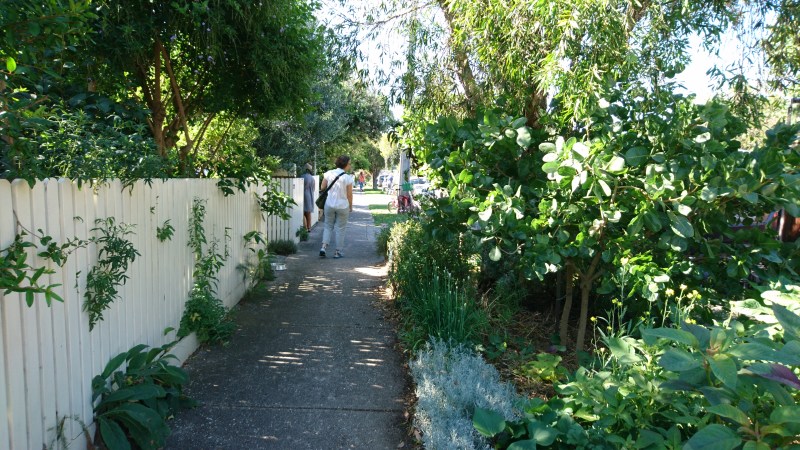
There’s a ‘nature strip’ between the pavement and the road. Karen got permission to grow on it, and the community helps themselves. Leaf Amaranth is ‘particularly popular with her Greek neighbours’, she says.
In this nature strip, Karen grows pistachios, artichokes, edible weeds (such as dandelions), leafy greens, potatoes, edible flowers and some herbs. She encourages neighbours to help themselves with signs like the one below.
Almost all these, including amaranth, can easily be grown in Britain. Except perhaps the pistachios.
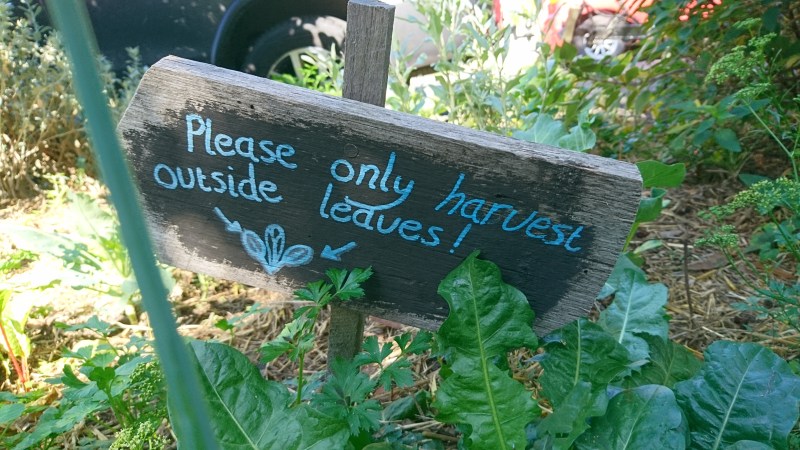
Instructions for picking – ‘nature strip’ gardens are shared by the community.
Don’t forget the roof
Karen has an area of flat roof over a car port. She keeps bees here. It means they ‘interact lightly with visitors to the garden and neighbours.’
Your roof is probably the sunniest part of your garden, as it will be the least likely to be shaded by trees or other buildings. Karen grows ‘sun-loving produce’ on the roof, such as strawberries, aubergines (eggplants) and tomatoes.
If you have any safe access to your roof at all, you could increase your harvests by growing pots.
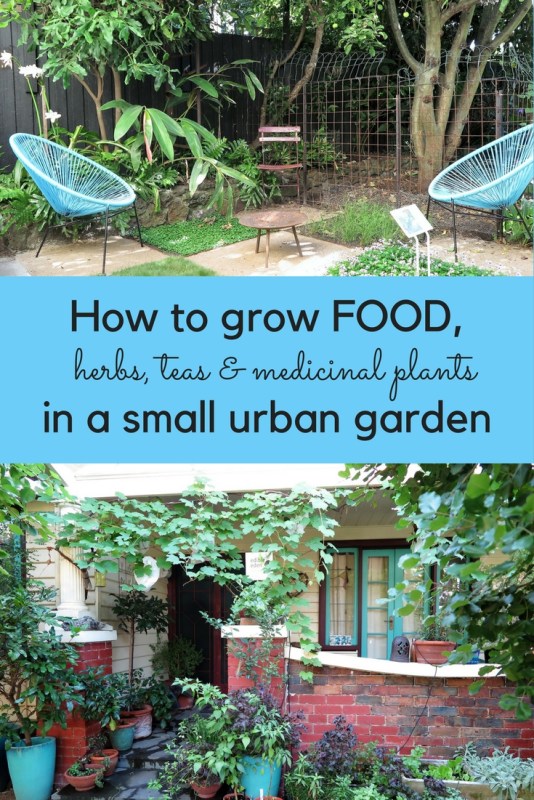
And don’t forget that even a shed roof is probably more open and sunny than the rest of the garden. Many houses in Britain and North America don’t have access to a roof area in the house, but even the smallest shed roof can be a good spot for growing tomatoes or herbs in pots.
And talking of pots
There are lots of pots at Gunyah. Many of the pots in the front garden are blue to reflect the colour of the windows. Karen grows herbs, salad leaves (such as pernilla) and trees in pots, including her favourite Lemon Myrtle, which does best in a pot.
She uses its leaves as teas, or dried and ground up in a variety of dishes.
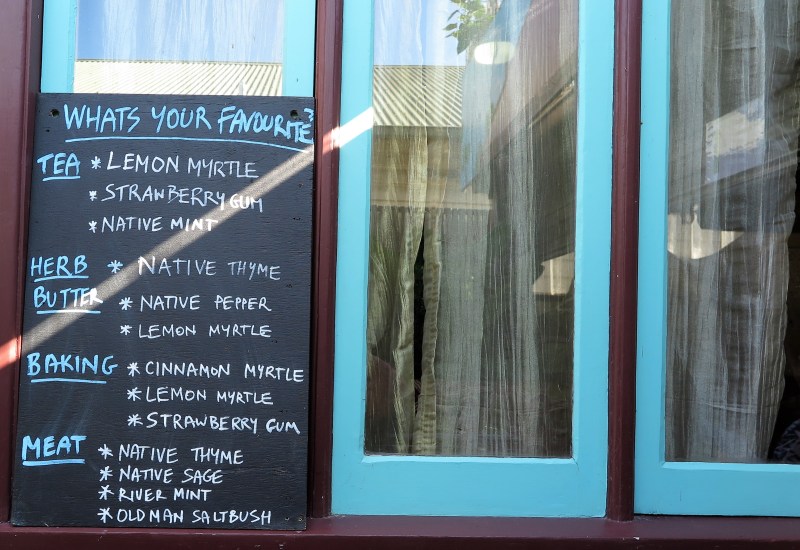
Karen tells us how to use some of the plants in her garden.
Edible and ‘useful’ plants around seating areas
There are two seating areas close to the house. There is a table for meals, surrounded by fruit trees. And there is a small terrace with a chequerboard herb pattern.
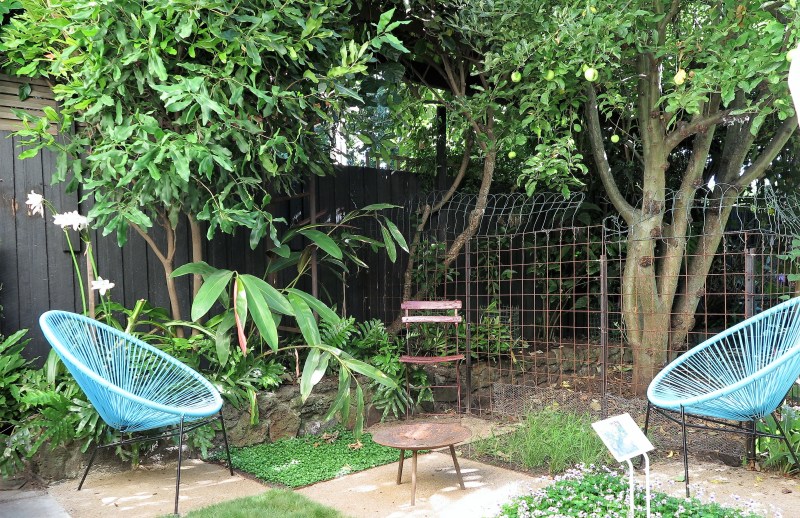
There are herbs in the squares on the terrace. To the right is a chicken pen, which runs along the side of the garden.
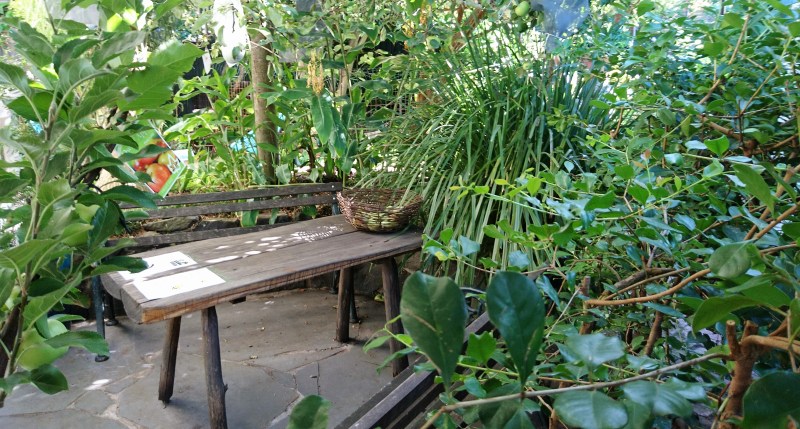
Fruit trees near the house shelter a table and seating area.
The motto of Edible Eden Design is ‘The time has come for a new (sub)urban garden. One that feeds us, body and soul.’ Read Karen’s blog here. Even if you live in a cold climate, there’s lots to learn.
There’s more about maximising your home-grown veg and fruit here.
I certainly came away with ideas for increasing the amount of food, herbal teas and medicinal plants I grow. So please spread the word by sharing this using the buttons below – thank you!
























I’d love to know what she does about rats and possums in particular. They ruin our food plants including fruit trees to the extent I’ve given up growing edibles past a few herbs.
She does have some cages, but I’m not sure what else she does about them. Most people I know in Australia grow all their edibles in large cages
photo stories of plants growth rate and advice: https://greengrowblog.wordpress.com/
A very interesting article thank you Alexandra. I think there is so much more we could all do with our front gardens and verges, especially growing edible crops. I am just reading James Wong’s book ‘grow for flavour’ which also ties in with this theme. Sue
I love James Wong’s book, and have very much enjoyed suggesting fuschia jam to jam-makers.